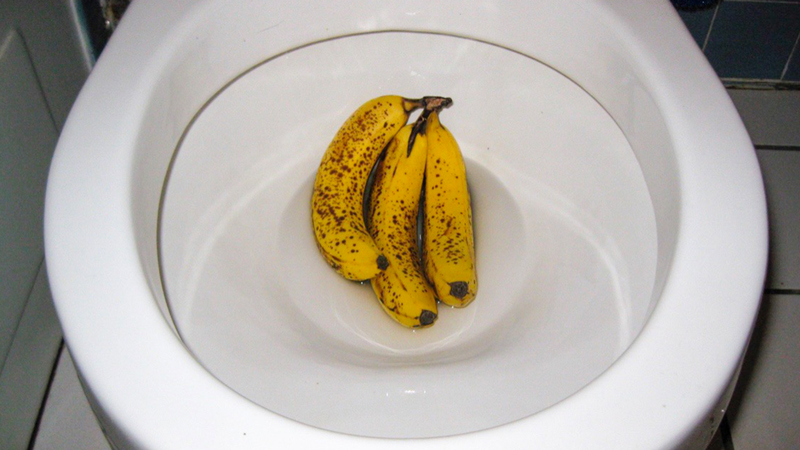Is it Rational to Dispose of Food in the Toilet?
Is it Rational to Dispose of Food in the Toilet?
Blog Article
Do you find yourself in search of selective information on What Can Happen If You Flush Food Down the Toilet??

Introduction
Many people are usually faced with the problem of what to do with food waste, especially when it concerns leftovers or scraps. One usual inquiry that emerges is whether it's okay to flush food down the bathroom. In this short article, we'll delve into the reasons people may consider flushing food, the repercussions of doing so, and alternate approaches for appropriate disposal.
Reasons why individuals may consider purging food
Absence of understanding
Some people may not know the prospective harm triggered by purging food down the bathroom. They might erroneously think that it's a harmless method.
Benefit
Flushing food down the bathroom may appear like a fast and easy solution to getting rid of unwanted scraps, particularly when there's no neighboring trash bin available.
Negligence
In many cases, people may just pick to flush food out of large negligence, without taking into consideration the effects of their activities.
Repercussions of flushing food down the commode
Environmental effect
Food waste that ends up in rivers can contribute to contamination and damage marine ecosystems. Additionally, the water made use of to purge food can strain water sources.
Pipes issues
Flushing food can cause clogged up pipes and drains, causing costly plumbing repair work and hassles.
Types of food that should not be flushed
Fibrous foods
Foods with fibrous appearances such as celery or corn husks can obtain tangled in pipelines and create obstructions.
Starchy foods
Starchy foods like pasta and rice can absorb water and swell, resulting in blockages in pipes.
Oils and fats
Greasy foods like bacon or cooking oils ought to never ever be purged down the bathroom as they can strengthen and cause blockages.
Proper disposal methods for food waste
Making use of a waste disposal unit
For homes equipped with waste disposal unit, food scraps can be ground up and purged via the plumbing system. However, not all foods appropriate for disposal in this fashion.
Recycling
Specific food packaging materials can be reused, minimizing waste and lessening environmental effect.
Composting
Composting is a green means to take care of food waste. Organic materials can be composted and used to improve dirt for gardening.
The importance of appropriate waste administration
Minimizing environmental injury
Appropriate waste administration techniques, such as composting and recycling, aid lessen pollution and protect natural resources for future generations.
Shielding pipes systems
By staying clear of the technique of flushing food down the bathroom, property owners can protect against expensive plumbing fixings and keep the stability of their plumbing systems.
Verdict
To conclude, while it might be alluring to flush food down the commode for convenience, it is essential to comprehend the prospective effects of this activity. By taking on proper waste administration techniques and throwing away food waste properly, individuals can add to healthier plumbing systems and a cleaner environment for all.
FLUSH FOOD DOWN THE TOILET?
FLUSHING FOOD CAN CAUSE BLOCKED DRAINS IN YOUR HOME
All of the plumbing fixtures in your home are connected to the same sewer pipe outside of your home. This outdoor sewer pipe is responsible for transporting all the wastewater from your home to the Council sewer mains. Even small pieces of food that go down the kitchen sink can cause problems for your sewer. It should therefore be obvious that flushing larger bits of food, such as meat, risks a clog in either the toilet itself or the sewer pipes. Flushing greasy food is even more problematic because oil coagulates when it cools, coating the interior lining of your pipes.
THE TOILET IS NOT A BIN
Food isn’t the only thing that people shouldn’t be flushing down the toilet. People use the toilet to dispose of all kinds of things such as tampons, makeup wipes, dental floss, kitty litter and even underwear. Water goes to great lengths to educate residents about the high costs and stress placed on wastewater treatment systems simply from people flushing the wrong stuff down the toilet. It costs taxpayers millions of dollars each year, and homeowners thousands in blocked drain repairs.
FLUSHING FOOD IS A WASTE OF WATER
Flushing food is a waste of our most precious resource - water. In June this year Level 1 water restrictions were introduced to protect water supply from drought conditions. Much of New South Wales continues to be affected by prolonged drought with recent figures revealing up to 97 per cent of the state remains in drought. Depending on whether you have a single or dual flush toilet, every single flush uses between five and 11 litres of water. In the current climate this is a huge amount of water to be wasting on flushing food that should be placed in the bin (or better yet, the compost).
https://www.jabplumbingsolutions.com.au/blog/can-you-flush-food-down-the-toilet

Do you like reading about Is it safe to flush food (especially rice) down the toilet?? Make a remark down the page. We'd be pleased to hear your feelings about this piece. We are looking forward to see you back again in the future. Those who enjoyed reading our blog entry plz don't forget to pass it around. We truly appreciate reading our article about Flushing Food Down the Toilet?.
Call Us Now Report this page